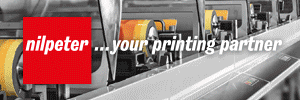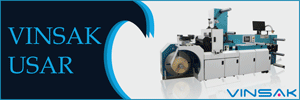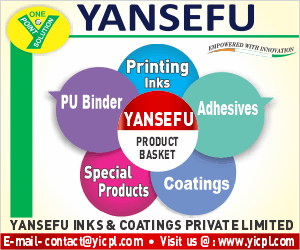
During the 10th Speciality Films & Flexible Packaging Global Summit of 2023 in Mumbai, Kirsur Gururaj, territory manager, DuPont India, delved into two significant advancements in the printing technology landscape. The first of these innovations is thermal plate-making technology, a well-established process. The second, a more recent development, is LED-based exposures, designed to streamline workflow processes.
Gururaj began by shedding light on the thermal plate-making workflow, emphasizing its apparent simplicity. However, he also drew attention to the traditional solvent-based method, which involves a sequence of six touch points. These intricate steps encompass exposing the material to initiate plate polymerization, transferring the digital file through a CtP (Computer-to-Plate) device, and eventually creating a relief print surface. This relief print surface can be achieved through either solvent-based techniques involving mechanical brushing or the more streamlined thermal process.
“The thermal process stands out due to its elimination of an entire step and associated equipment, such as dryers and solvent recovery units. This streamlining contributes significantly to its overall simplicity and efficiency,” said Gururaj.
He went on to highlight the reasons behind DuPont’s adoption of thermal technology, with productivity enhancement taking center stage. In a conventional solvent-based system, the plate-making process can span anywhere from one and a half to as long as four hours, primarily due to the time-consuming drying phase, where solvents saturate the plate, necessitating evaporation via heaters.
In the thermal process, drying becomes entirely redundant, and there is zero contact with solvents. Solvents are effectively eliminated from the equation. This simple shift from solvent-based to thermal technology results in a remarkable surge in productivity, boasting an increase of approximately 75%, as Gururaj astutely pointed out.
Additionally, Gururaj underscored the sustainability advantages of thermal plate making. Citing a research study, he highlighted that this technology leads to a substantial 36% reduction in non-renewable energy consumption and its associated impact on global warming. This remarkable achievement primarily stems from the elimination of solvents and dryers, resulting in an impressive 81% reduction in electricity usage throughout the process. Furthermore, the absence of solvents plays a pivotal role in significantly reducing Volatile Organic Compounds (VoC) by an impressive 99.8%. “At DuPont, we are on the brink of eliminating almost all the harmful chemicals conventionally associated with solvent-based plate-making workflows,” said Gururaj.
Shifting gears, Gururaj directed the audience’s attention to LED-based exposures, a recent technological advancement that has gained significant traction in recent years, with a primary focus on streamlining the flexo plate-making workflow. Traditionally, the polymerization process in this field heavily relied on mercury-based back exposures, utilizing an array of tubes for polymerization.
Nevertheless, the rise in popularity of LEDs has brought about a noticeable shift – replacing conventional back exposures with LED lamps. This transition aims not only to achieve environmental benefits by eliminating mercury but also to introduce the advantageous features of LED technology into the realm of flexo plate making.
The adoption of LED technology presents a multitude of advantages, notably consistent output, which fosters greater standardization and reliability across the entire plate-making process. This consistent and repeatable outcome also translates into a substantial enhancement in print quality.
Gururaj spotlighted the Esko XPS LED-based system in his presentation. He elucidated that LED-based systems are readily available in the market, with the XPS system developed by Esko Graphics being a prominent choice. The XPS system comes with a preloaded library comprising over 150 plates, including numerous options from DuPont.
“This extensive library might raise questions regarding the need for a specialized plate design tailored for the XPS system. To address this query, a study was conducted, revealing significant differences in the polymerization process between LED-based systems and those using Mercury-based backlights. Based on these findings, a new plate design ‘Lightning’ was introduced in 2021. This innovative plate design not only led to substantial improvements in productivity but also upheld high-quality standards. In fact, it was honored with the FTA Technical Innovation Award in 2022,” Gururaj concluded, emphasizing the importance of a specialized plate design to optimize the performance of the XPS system.
In a recent development this year, DuPont has expanded the Lightning platform to incorporate a thermal plate, adding another dimension to the capabilities of this innovative system.







